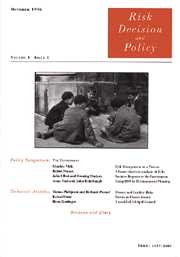No CrossRef data available.
Article contents
The risk of burnout: A dynamic phase model
Published online by Cambridge University Press: 02 January 2001
Abstract
The aim of this study is to assess the risk of burnout among teachers.
The burnout syndrome is a complex phenomenon which has been studied extensively from different perspectives. However, the focus was always on its causes and effects but seldom on the worsening processes. On the contrary, this study starts from a static analysis of the burnout (Golembiewski and Munzenrider 1998) and develops a dynamic model in order to assess the risks of worsening the current degree of burnout.
The Maslach Burnout Inventory (MBI, Italian validated Ed version) was administered to a sample of 415 Italian teachers across different levels (from primary school to university) together with some questions on socio-demographic variables. Data were submitted to factor analysis (varimax) which suggested a five-factor structure (personal accomplishment, climate, depersonalization, cynicism, emotional exhaustion). The mean values were calculated for both the three Maslach's dimensions and for the five factors and then compared: the latter seemed to provide a finer interpretation of the degree of burnout. Therefore, Golembiewski's eight-phase model was revised and all the possible passages from one phase to another were studied, with the integration of the new five sub-scales. A new phase model was developed, structured of 32 sub-phases which were then appropriately reduced to 16. This new model was used as a dynamic interpretation tool of Golembiewski's phase model. Besides, all the theoretic probabilities were calculated in order to evaluate the risk of worsening.
The MBI is used as an assessment tool of the current degree of burnout and the eight-phase model is used to classify the gravity of the situation, therefore it is possible to make a diagnosis of the situation. The development of the 16 sub-phases model might provide a prognosis of the risks of burnout. Further research should be conducted to validate the model.
Information
- Type
- Technical article
- Information
- Copyright
- © 2000 Risk Decision and Policy

